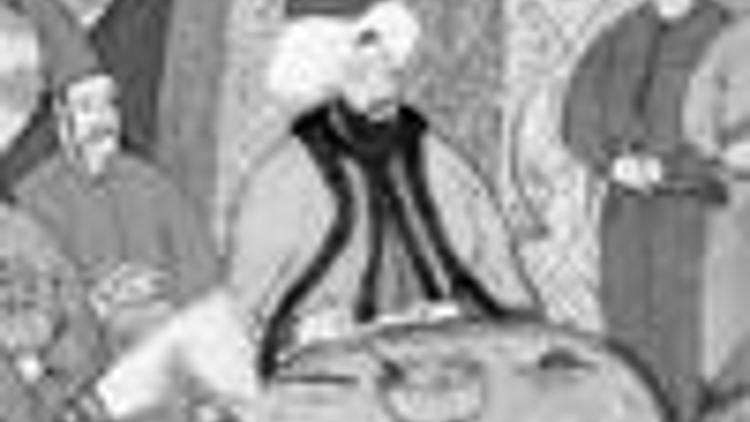Sultan’s kitchen employed 2000 cooks
Güncelleme Tarihi:

by Johannes Hillje
Oluşturulma Tarihi: Mart 10, 2009 00:00
ISTANBUL - As part of an art and lecture series organized by the Turkish Culture Foundation, Dr. Zeynep Ertuğ of the Department of History at Istanbul University, reveals some secrets of the imperial kitchen of Topkapı Palace, the largest of all palace kitchens.
One of the most important parts of any sultan’s palace during the Ottoman Empire was the kitchen, and the imperial kitchen at Istanbul’s Topkapı Palace, according to an Istanbul historian, was the prototype for the ones at Dolmabahçe and other palaces built later.
Dr. Zeynep Ertuğ, from the Department of History at Istanbul University, spoke in Istanbul last week about "The Kitchens of Topkapı Palace" as part of an art and lecture series organized by the U.S.-based Turkish Culture Foundation.
Located in the second backyard of the palace, the Topkapı kitchen was the largest of all palace kitchens, consisting of nine different units that were responsible for different groups of residents and visitors. Each unit had its own team with several specialized cooks, such as kepabcılar who made kebabs, pilavcılar who made rice and tatlıcılar who made desserts. The various dishes were never prepared in the same place in order to avoid mixing their smells, Ertuğ said.
2,000 workers in kitchen
Up to 2,000 workers were employed in the palace kitchen, preparing food twice a day for at least 1,500 people. There was a strict hierarchy among the cooks and helpers of the imperial kitchen, with the kuşçubaşlıs, who oversaw the food for the sultan, at the top. According to Ertuğ, a total of 13 cooks were involved in preparing meals for the Ottoman leader.
It was once common for the sultan to eat alone, but "things changed in the 19th century, when the sultan started to eat with other residents at a table," Ertuğ said. Before this, the sultan would sit on a paper napkin-covered floor while he ate.
The sultan’s meal was prepared in a special kitchen called the kuşhane and it was always tested first by a taster who the sultan trusted. In the custom of this time, the sultan would eat with three fingers on his right hand and use a spoon when he eats liquid food only.
According to Ertuğ, most of the sultans preferred to drink imported wine, which was always served in a ceramic bottle and drunk from a ceramic bowl, so as not to reveal its contents to others.
Over the years, various sultans set out several hygienic rules that had to be followed by the cooks. For example, "If there were any black pieces in the bread of the royal bakery, the baker had to face consequences," Ertuğ said.
In particular, Sultan Murat II ordered that food only be cooked in tiny saucepans and set out rules regarding the smell of the served meat.
The dishes prepared in the kitchen of Topkapı Palace do not differ much from today’s Turkish food. Chicken, börek, pide and rice were common at meals and favored by most sultans. The desserts and pastries that can be found in many shops today were made by the Ottoman kitchens in large numbers, with a separate section set up for the preparation of sweets.
Dr. Zeynep Ertuğ, from the Department of History at Istanbul University, spoke in Istanbul last week about "The Kitchens of Topkapı Palace" as part of an art and lecture series organized by the U.S.-based Turkish Culture Foundation.
Located in the second backyard of the palace, the Topkapı kitchen was the largest of all palace kitchens, consisting of nine different units that were responsible for different groups of residents and visitors. Each unit had its own team with several specialized cooks, such as kepabcılar who made kebabs, pilavcılar who made rice and tatlıcılar who made desserts. The various dishes were never prepared in the same place in order to avoid mixing their smells, Ertuğ said.
2,000 workers in kitchen
Up to 2,000 workers were employed in the palace kitchen, preparing food twice a day for at least 1,500 people. There was a strict hierarchy among the cooks and helpers of the imperial kitchen, with the kuşçubaşlıs, who oversaw the food for the sultan, at the top. According to Ertuğ, a total of 13 cooks were involved in preparing meals for the Ottoman leader.
It was once common for the sultan to eat alone, but "things changed in the 19th century, when the sultan started to eat with other residents at a table," Ertuğ said. Before this, the sultan would sit on a paper napkin-covered floor while he ate.
The sultan’s meal was prepared in a special kitchen called the kuşhane and it was always tested first by a taster who the sultan trusted. In the custom of this time, the sultan would eat with three fingers on his right hand and use a spoon when he eats liquid food only.
According to Ertuğ, most of the sultans preferred to drink imported wine, which was always served in a ceramic bottle and drunk from a ceramic bowl, so as not to reveal its contents to others.
Over the years, various sultans set out several hygienic rules that had to be followed by the cooks. For example, "If there were any black pieces in the bread of the royal bakery, the baker had to face consequences," Ertuğ said.
In particular, Sultan Murat II ordered that food only be cooked in tiny saucepans and set out rules regarding the smell of the served meat.
The dishes prepared in the kitchen of Topkapı Palace do not differ much from today’s Turkish food. Chicken, börek, pide and rice were common at meals and favored by most sultans. The desserts and pastries that can be found in many shops today were made by the Ottoman kitchens in large numbers, with a separate section set up for the preparation of sweets.

